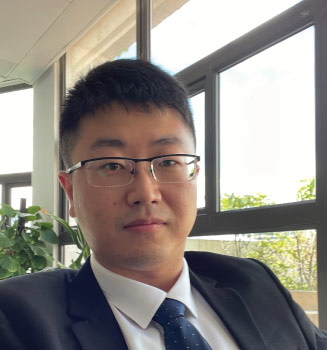Material Science and Engineering
Simple means to a clear view
The image of an object that is obscured when the light passes through a scattering material can be recovered in real time.

A novel method that produces a clear image by using a simple cost-effective random scattering medium in real time could help overcome problems of obscured images.
When light passes through a light-scattering material, it is diffused rather than absorbed, which means a clear image of the source object is lost. Scattering media include clouds, which poses problems for Earth-based astronomy, and body tissue, which affects medical imaging.
Previous methods for reconstructing scatted light have required some initial knowledge of the object and the ability to control the wavefront of light illuminating it. This has involved complicated optical elements and high vulnerability to motion and mechanical instability. Computational algorithms are then able to post-process the detected light to generate an image.
To get more efficient ways of reconstruction, speckle-correlation imaging was proposed. This extracts information about the source from fluctuations in the intensity, or speckles, in the transmitted light.
However, many of the technologies based on speckle-correlation need time-consuming and intricately calibrated computational reconstruction. Also, still missing is some information such as the image orientation and location.
Wenhong Yang and Qiaoqiang Gan from KAUST, working with Jietao Liu from the Xiong’an Institute of Innovation in China, have developed a way to directly obtain a clear image from a single shot of the speckle image[1].
“We have developed a strategy of calibration-free, reconstruction-free, real-time imaging of static and moving objects with their actual orientation information,” explains Yang. “This novel technique only requires simple or low-cost devices, without the post-computational reconstruction”
The team passed light from a small standardized test object through a thin diffusing material. By moving a camera in a direction away from the diffuser, they were able to build a three-dimensional image, taking slices through the speckles.
By looking at enlarged sections of these images, the researchers, to their surprise, could directly see reproductions of the test object; they could see through the random diffuser with the naked eye and real-time video imaging. It required no complex equipment for the active control of light nor prior knowledge of the source or diffusion medium. They could also find the lost orientation information and location of the test object.
“Our work presents a significant step in the field of scattering imaging and will shed light on new avenues for imaging through diffusive media,” says Yang.
Reference
- Liu, J., Yang, W., Song, G. & Gan, Q. Directly and instantly seeing through random diffusers by self-imaging in scattering speckles. PhotoniX 4, 1 (2023).| article
You might also like

Material Science and Engineering
Electron movie guides design of layered perovskite materials

Material Science and Engineering
Remote region sensor for essential vitamin deficiency

Material Science and Engineering
Low-power hydrogen sensor detects leaks in an instant

Material Science and Engineering
Illuminating pathways to long-lived organic solar cells

Chemistry
Beating the dark current for safer X-ray imaging

Chemical Engineering
Net benefits for advanced materials design

Material Science and Engineering
Atom-thin insulator grown into perfect films

Material Science and Engineering




